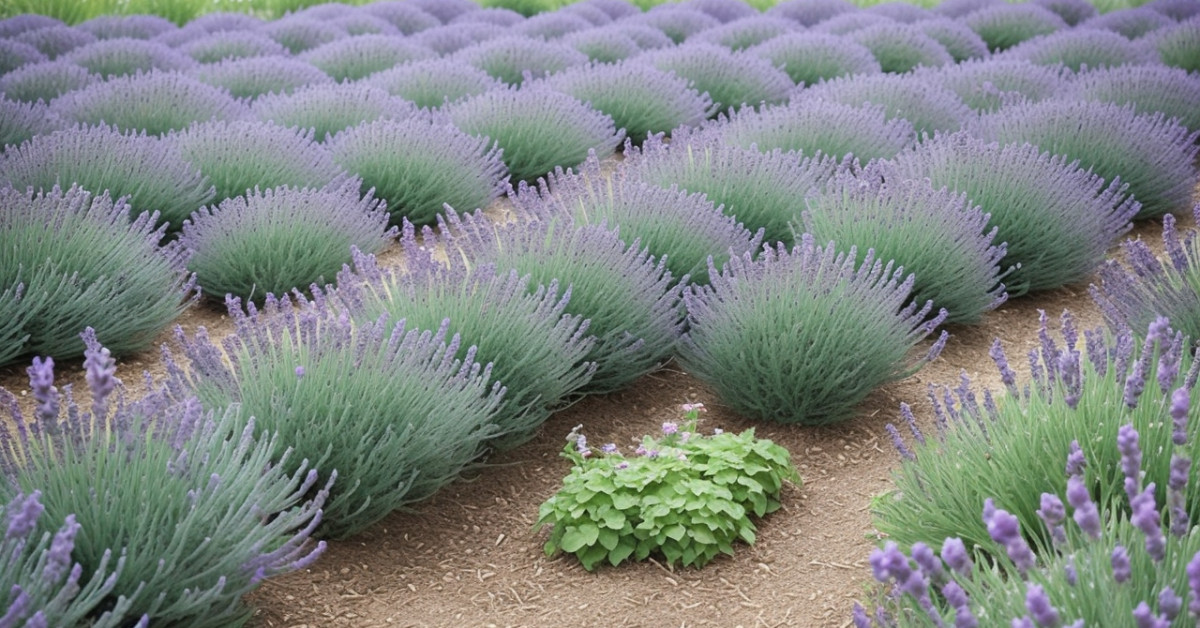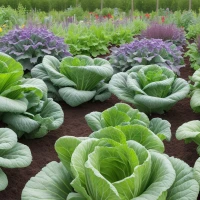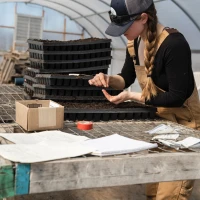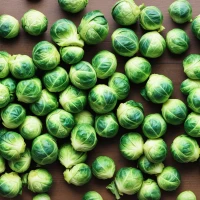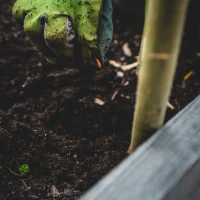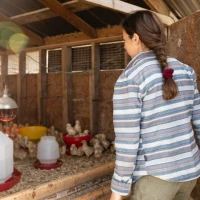The world of gardening is filled with aromatic pleasures and visual delights, and among the myriad of plants that can transform your garden into an oasis of tranquility, lavender holds a special place. Not only does it generate a soothing scent that permeates the air, but it can also play a significant role in the health and vitality of your garden ecosystem. This brings us to the heart of our discussion today: lavender companion planting. By the end of this detailed exploration, you will be well-versed in the secrets of pairing lavender with complementary plants to create a garden that is not only thriving but also a feast for the eyes and nose.
The Essentials of Lavender Companion Planting
When discussing lavender within the garden context, it’s essential to understand how it can benefit from and contribute to the plants around it. By choosing the right companions, gardeners can make the most out of these interactions leading to numerous positive outcomes.
Why Plant Companions for Lavender?
- Pest Deterrent: Certain companion plants can naturally repel pests that would otherwise pose a risk to lavender.
- Pollinator Attraction: Companions may attract beneficial pollinators to the garden, which, in turn, supports the growth of lavender.
- Resource Efficiency: Well-chosen companions can help manage resources like sunlight and nutrients without competing with your lavender.
- Aesthetic Harmony: Companion planting also serves an ornamental purpose by enhancing the visual appeal of your garden.
The Best Companion Plants for Lavender
Identifying the ideal companions for lavender requires knowledge of your garden’s conditions and what each potential companion brings to the table.
Plants That Complement Lavender
- Rosemary and Sage: These herbaceous friends share similar growing needs, making them excellent partners for lavender.
- Thyme and Oregano: Ground-covering herbs like thyme and oregano intertwine beautifully with lavender’s taller blooms.
- Vines and Climbers: Plants like clematis and roses can rise above the low profile of lavender, providing vertical diversity in the garden.
Plants to Avoid Near Lavender
- High-Moisture Plants: Lavender thrives in well-drained conditions, so avoid planting it near species that require lots of water, like willows or bamboos.
- High-Fertilizer Plants: Heavily fertilized plants are also a no-go, as lavender fares better in leaner soils where it can stand out.
Cultivating Lavender in Your Garden
Soil and Sunlight Considerations
- Well-Draining Soil: Ensure your lavender is planted in soil that avoids waterlogging.
- Ample Sunlight: Lavender blossoms with exposure to full sun – at least six hours a day.
Watering and Care for Lavender
- Minimal Watering: Lavender is drought tolerant; overwatering can lead to root rot.
- Pruning: Regular pruning maintains the plant’s shape and encourages new growth.
Enhancing Garden Health Through Companion Planting
Natural Pest Control
Companions can chickens eat cabbage act as both lures and repellents for garden pests, contributing to a balanced garden ecosystem. Here are a few combinations:
- Lavender and Marigolds: Marigolds’ strong scent complements lavender’s pest-repellent properties.
- Alliums: Planting onions, garlic, or chives near lavender can ward off unwanted bugs.
Soil Fertility and Quality
Companion planting can also affect the soil’s fertility black and white chicken texture, which has an essential impact on lavender’s growth.
- Legumes: Plants like beans or peas fix nitrogen in the soil, which, although lavender doesn’t require much, can benefit the garden overall.
Planning Your Lavender Companion Garden
Visual and Aesthetic Aspects
- Color Contrasts: Pair lavender with plants that offer different hues, like golden yarrow or white chamomile.
- Height Dynamics: Incorporating plants of various heights creates an attractive layered effect.
Spatial Arrangements
- Plotting Plant Positions: Consider the mature size of each plant to avoid overcrowding and ensure proper air circulation.
Lavender in the Garden Throughout the Seasons
Spring Awakening
- Pruning: Trim back lavender in the spring to prepare it for new growth.
- Companions’ Rebirth: Companion plants like spring bulbs can rise alongside your lavender.
Summer Blooms
- Peak Lavender: Enjoy the lavender at its fullest, alongside summer bloomers like coneflowers or black-eyed Susans.
- Water Management: Be sparse with water even in the heat, especially for lavender.
Autumn Preparations
- Harvesting: Collect lavender blooms before the cold sets in.
- Preparing Companions: Some plants might need to be cut back or insulated for winter.
Winter Dormancy
- Mulching: Add a light mulch around lavender to protect against frost.
- Resting Period: Use this time to plan next year’s companion planting strategy.
Troubleshooting Common Issues in Lavender Companion Planting
Pests and Diseases
- Rot and Fungus: Ensuring good drainage and air circulation will help prevent issues inherent in dense, damp conditions.
Plant Competition
- Balanced Planting: Be mindful of the space and resources, so your lavender and its companions can coexist harmoniously.
Advanced Lavender Companion Planting Techniques
Intercropping and Rotating
- Intercropping: Grow lavender alongside short-lived plants to make full use of garden space.
- Rotational Planting: Rotate lavender with other crops to keep the soil healthy and pests at bay.
Final Thoughts on Mastering Lavender Companion Planting
Unveiling the secrets of lavender companion planting has shown us the intricate balance and attention required to cultivate a garden that is not just surviving but robustly thriving. By following these guidelines and tips, utilizing precise plant pairings, and being mindful of the natural ecosystem, you are now equipped to transform your garden into a breathtaking scene of aromatic lavender, vibrant companions, and bountiful life.
Remember that the true mark of a well-tended garden lies not only in its visual appeal but also in its contribution to local biodiversity and the overall well-being of its plants. So, as you embark on this fragrant journey, take pride in knowing that with each companion plant you pair with your lavender, you’re weaving a richer tapestry of life in your garden.
Embrace the calming essence of lavender and the strategic brilliance of companion planting, and watch as your garden reaches new heights of harmony and abundance.
